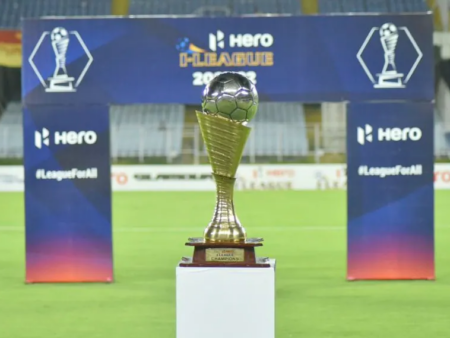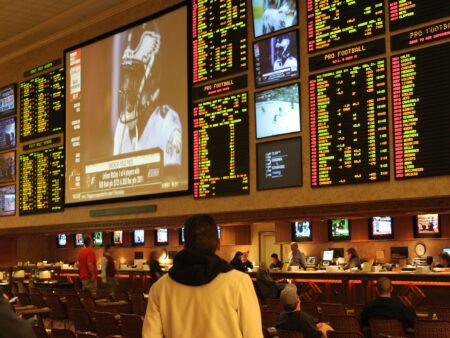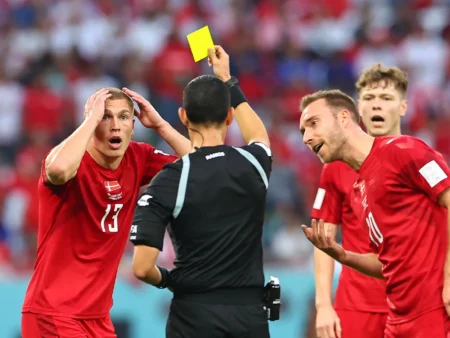Field hockey is a team sport that has been around for centuries, with its earliest written records dating back to the 12th century in England. The game is played between two teams, and the objective is to use sticks to drive a small ball into the opposing team’s goal. Field hockey can be played on grass, astroturf, or in an indoor setting.
How Many Players are on a Field Hockey Team
Table of Contents
The Number of Players in Field Hockey & Their Positions
Field hockey is a team sport that has been around for centuries, with its earliest written records dating back to the 12th century in England. The game is played between two teams, and the objective is to use sticks to drive a small ball into the opposing team’s goal. Field hockey can be played on grass, astroturf, or in an indoor setting.
Field Hockey Team Size
Field hockey teams typically consist of 11 players on the field at one time, including a goalkeeper. Each team will also bring two or three additional players as substitutes, so up to sixteen players can be part of the roster for a single game. This means that field hockey teams are significantly larger than those in other contact sports like basketball or soccer, which generally have no more than twelve players on the field.
Positions in Field Hockey
Players are typically placed into three different positions: forwards, defenders and midfielders. Forwards are responsible for attacking and scoring goals while defenders defend against them; midfielders play both attacking and defensive roles but help to transition the ball from one side of the pitch to another. Midfielders also tend to have better ball control than attackers or defenders due to their more well-rounded skill set. Goalkeepers are the last line of defense for a team and must be able to make quick decisions when defending against an attack.
Goalkeeper
A goalkeeper in field hockey is an important defensive position that can be the difference between winning and losing a game. The primary responsibility of this player is to protect the goal from opposition shots by any means necessary. This could involve blocking, deflecting, or even saving the ball before it crosses the goal line. To do this successfully, the goalkeeper must have excellent reflexes and hand-eye coordination, as well as a thorough understanding of the rules and strategy of field hockey.
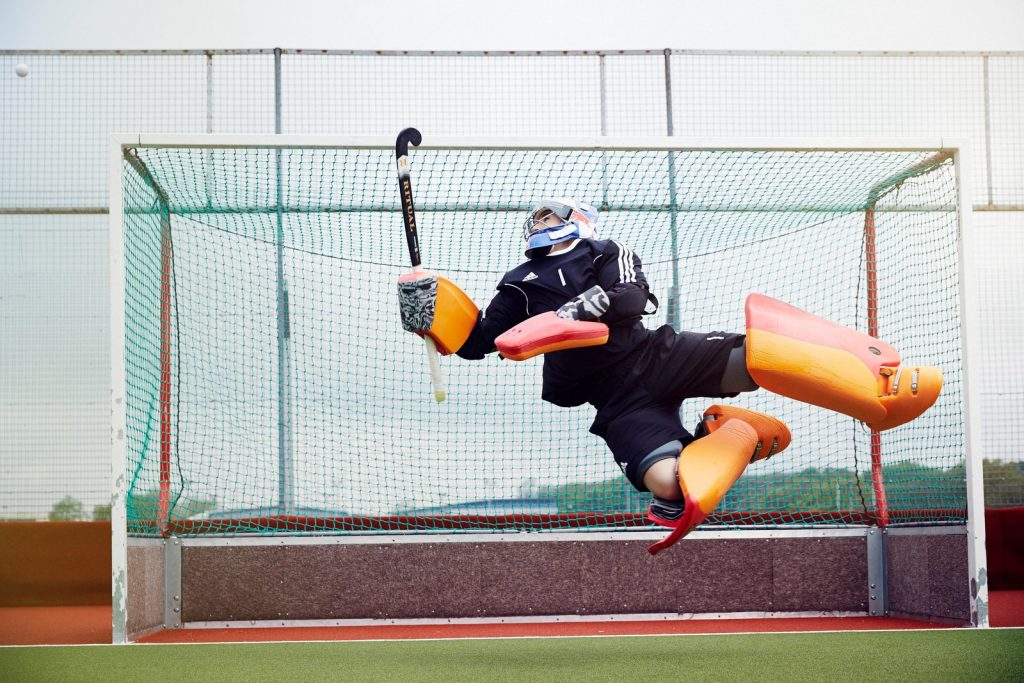
The goalkeeper also has a critical role in communicating with other players on their team by providing verbal cues and directions during play. This type of communication is key to helping everyone on the team stay organized and making sure they are all working together towards a common goal. Additionally, it is not uncommon for goalkeepers to pass balls upfield to start attacking plays or to help set up teammates in better positions near the goal cage.
Defenders
Field Hockey defenders must be skilled at stopping goals and blocking passes from reaching their team’s opponents. They are often the last line of defense, making them essential for a successful team. Defenders must possess excellent communication skills in order to call out directions to their fellow players and coordinate defensive strategies. Great defenders anticipate the next move of their opponents, anticipate passing lanes, and cut off shots before they can be taken.
To be successful in the role of defender in field hockey, athletes need a combination of physical fitness and agility as well as knowledge of the game and tactical skills. They require strength, speed, endurance, spatial awareness and quick reactions to be able to keep up with the game play. Good positioning on the field is key; this includes reading plays quickly and accurately predicting opponents’ moves before they happen. Defenders also need to recognize when they can take risks or if they have to stay back defensively.
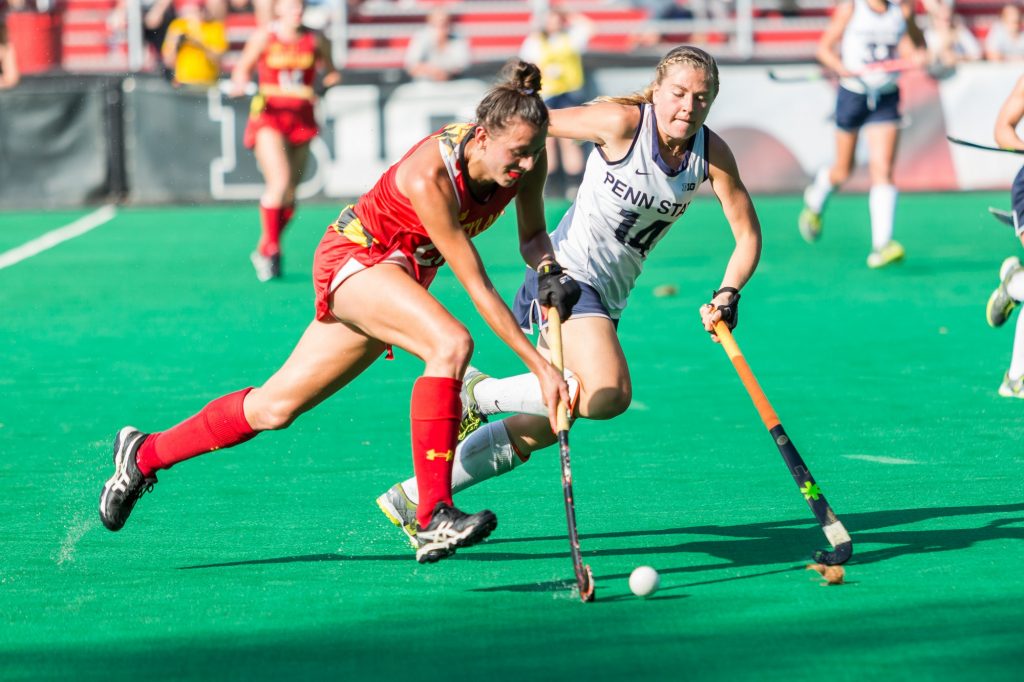
Defenders should master specific skills such as long tackling (sweeping), short tackling (blocking), interception, shielding the ball from attackers, clearing aerial balls and blocking shots on goal attempts. They must also know how to position themselves properly in order to pressure an attacker or deny passing lanes. Players should work on perfecting their ball control so that they can pass accurately out of danger when needed during defensive situations.
Field hockey defenders need strong teamwork abilities in order to join forces with midfielders—who bridge gaps between defense and offense—in order to form a successful unit with other players on the team. It’s important for defenders to understand their part within the team system because together they are responsible for preventing goals from being scored against them. Knowing when it is appropriate to push forward or hold back is also essential for field hockey defenders; both scenarios require quick decision-making skills under pressure which can ultimately decide victory or defeat for a team.
Midfield
The position of midfielder in field hockey is an important one, as it lies at the heart of the game. Midfielders are responsible for connecting the defense, attack and transition elements of the game in order to create scoring opportunities. They must be able to move quickly and possess a great deal of stamina so that they can cover all areas of the pitch.
Midfielders usually have good dribbling skills, enabling them to carry the ball across long distances and keep possession with ease. They must be able to read the game well, recognizing when it is best to pass or shoot on goal. Additionally, they must be good communicators on the pitch, calling out instructions to their teammates and helping to organize the defense while also playing offense when necessary.
To be successful as a midfielder in field hockey, it helps if you have good endurance and agility. You should also have solid technical skills such as passing and shooting accuracy, ball control and stick-handling ability. Good vision is especially essential for midfielders since they need to survey the entire field looking for open players or potential scoring opportunities.
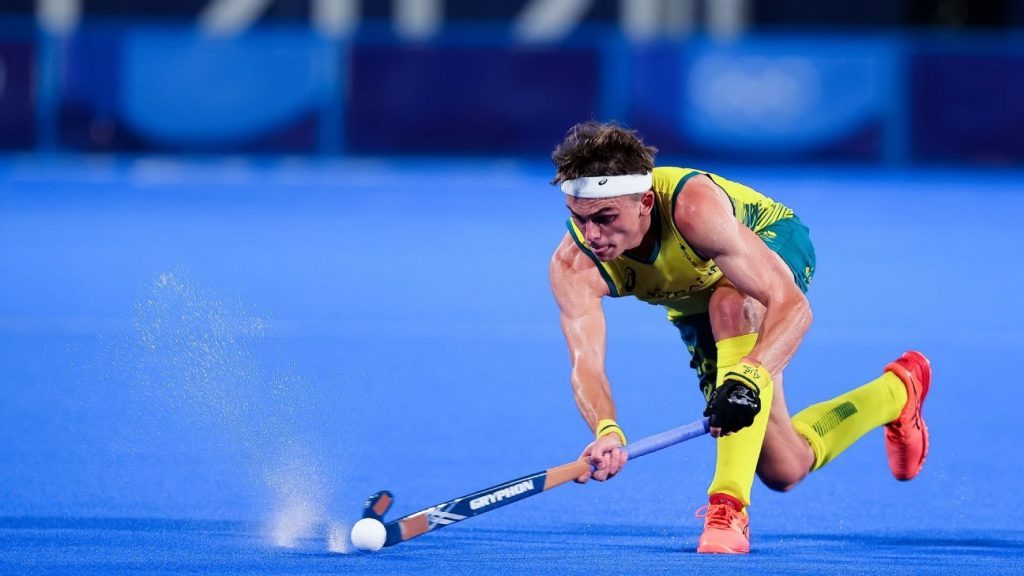
The position of midfielder requires strong mental focus since they are constantly thinking ahead while keeping track of what’s happening around them on the pitch. This can become even more challenging during tight matches when pressure builds up from both sides. To stay composed under pressure situations requires strong mental capability which most midfielders develop through experience over time playing competitive field hockey matches.
Finally, midfielders need to be tactically astute and know when it’s best to hold back or push forward depending on how play is developing in each match situation. Learning these tactical nuances comes with practice but ultimately requires great communication between midfielders and other players on their team so everyone knows what needs to happen next in order to seize victory from their opponents!
Strikers
Field hockey strikers are a highly important and integral part of any team. As the name suggests, they are responsible for putting the ball in the opposing team’s net, which requires skill, speed and accuracy. Field hockey strikers must have excellent technique and knowledge of the game in order to be successful—they need to know exactly when to make their runs, spot passing opportunities and find a way past defenders. To do this, they must have great vision on the field and be able to think quickly on their feet.
The most successful strikers often possess strong physical attributes, such as agility, power and endurance. They also need superior concentration skills, technical expertise with the stick, an ability to strike accurately at goal from any angle or distance, plus a deep understanding of passing options available in any given situation. Strikers must also possess good mental strength in order to remain resilient despite regularly being under pressure from opposition defenders.
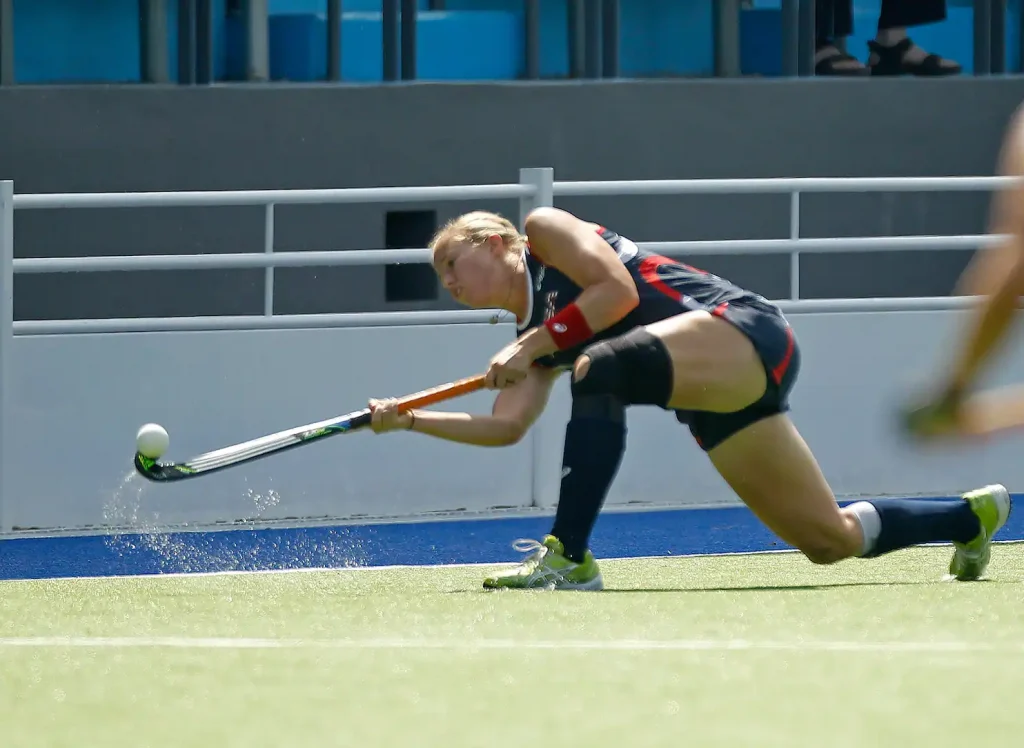
Strikers must develop tactical awareness in order to outwit opponents; however it is their speed off the mark that often makes them so dangerous. A striker who can move quickly into space can be extremely difficult for defenders to stop if they manage to break away from them at pace. Strikers also require strong teamwork skills; they need to communicate effectively with their teammates in order to create scoring chances or capitalise upon situations where space has opened up on the pitch due to defensive errors.
Overall, field hockey strikers are essential players who have a huge influence over how well a team performs on match day. Their abilities often determine whether goals will be scored or not – so scouts will keep an eye out for those who demonstrate talent and potential during matches. With hard work and dedication, these players could one day reach international level success!
Variations to Traditional Team Size
Indoor Field Hockey
Depending on the rules of the game and the playing area, the optimal team size can vary. Generally speaking, indoor field hockey teams typically consist of five players, including a goalie. However, some tournaments and competitive leagues may require larger teams of up to six or seven players on each side.
The formation of an indoor field hockey team is an important factor in determining its success. The ideal formation will provide adequate coverage of all areas of the court while also allowing for quick insight into potential strategic opportunities. Typcially, coaches will use formations that provide two forwards, two midfielders and one defender with a goalie behind them; however, coaches can vary this setup depending on their desired strategy.
Hockey5s
Generally, each team is made up of five players on the field at one time, including the goalkeeper. However, teams can also choose to play with four players in the field and a rolling substitute player.
In international tournaments and competitions, teams are limited to having no more than seven players, including both substitutes and starters. This means that teams will have to make strategic decisions about who they want to start each game and who they should keep as a substitute.
Beach Hockey
Team sizes of beach hockey vary depending on the type of league or tournament, but typically range between three to five players per team. The player’s positions on each team are very similar to those of ice hockey teams: goalie, defense, and forwards. Depending on the size of the league or tournament, goalies may be optional due to small team sizes.
Most beach hockey leagues have teams with three players: one goalie and two field players. This gives each player more space on the court to move around and make plays. The two field players often take up defensive roles in order to protect their own goal and prevent opponents from scoring. Some leagues require teams to have four players: two defensemen and two forwards, which provides more coverage for larger fields.
Tournaments such as Euro Beach Hockey usually feature five-player teams, with two defenders, two attackers/forwards, and a goalie. This allows for a more competitive game as teams can cover more ground on the field while still having skilled goaltenders in net. Additionally, five-player teams give beach hockey coaches more options when it comes to tactics and formations since they can choose from any combination of offensive or defensive lineups depending on their opponent’s strategy.
Final Thoughts
In conclusion, the size of a field hockey team can vary depending on the level of competition and the rules and regulations of matches. Generally speaking, it is recommended that field hockey teams consist of at least ten players, with eleven being the optimal number for competition. In some cases, there may be additional players available as substitutes, depending on the tournament or match requirements. This allows for more flexibility when it comes to substitutions and strategies during game time.
Frequently Asked Questions
What are the 11 positions in a field hockey team?
The 11 positions in a field hockey team include the goalkeeper, defensive players, center midfielders, right and left wings, strikers, and attacking midfielders.
How many players are on a women’s field hockey team?
A women’s field hockey team typically consists of 11 players, including a goalkeeper. When playing in an international game, teams must select no more than 16 players over the age of 18.
What is the hardest position in field hockey?
The most challenging position in field hockey is the goalkeeper, or goalie. This person is responsible for guarding the goal from being scored by the opposing team.
- ISL Semi-Final Prediction – Mumbai City FC vs. FC Goa, Apr 29 - April 24, 2024
- ISL Semi-Final Prediction – Mohun Bagan Super Giant vs. Odisha FC, Apr 28 - April 24, 2024
- ISL Match Prediction FC Goa vs. Mumbai City FC, Apr 24 - April 22, 2024

